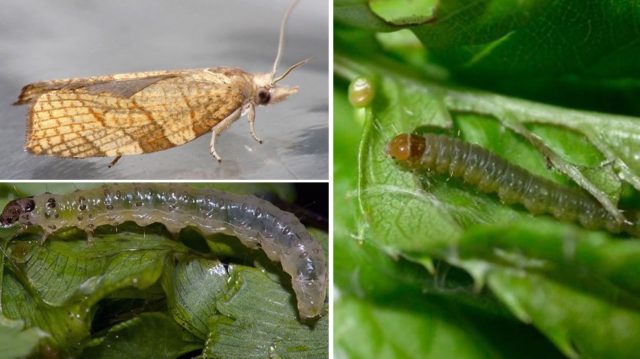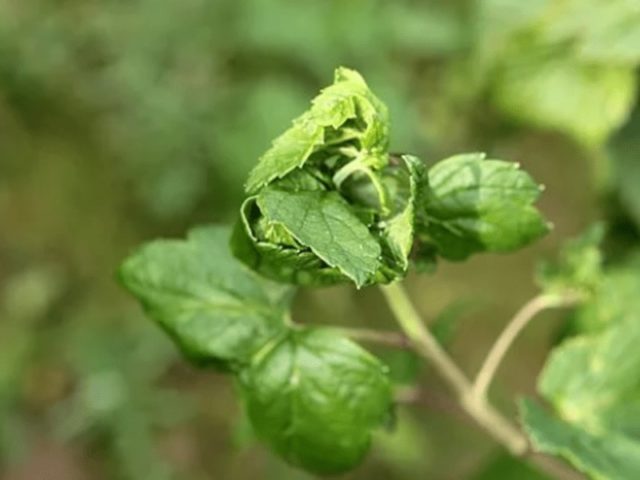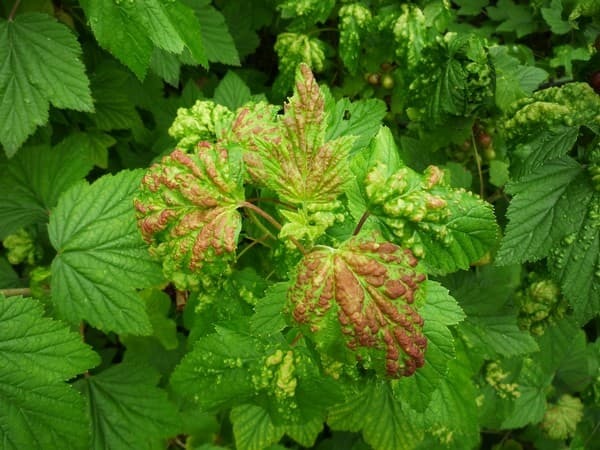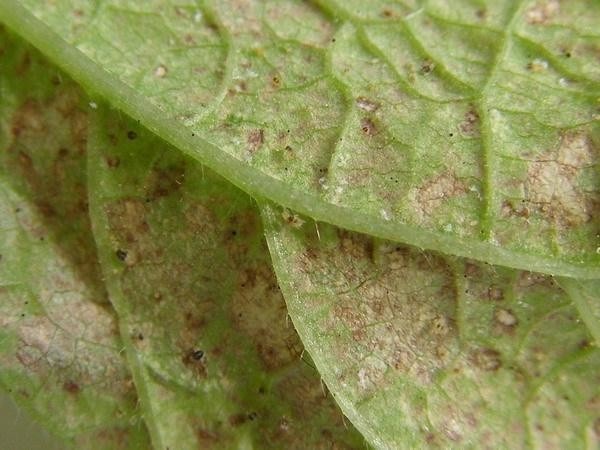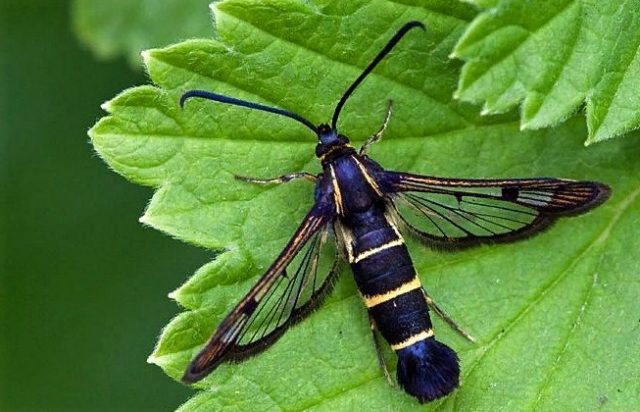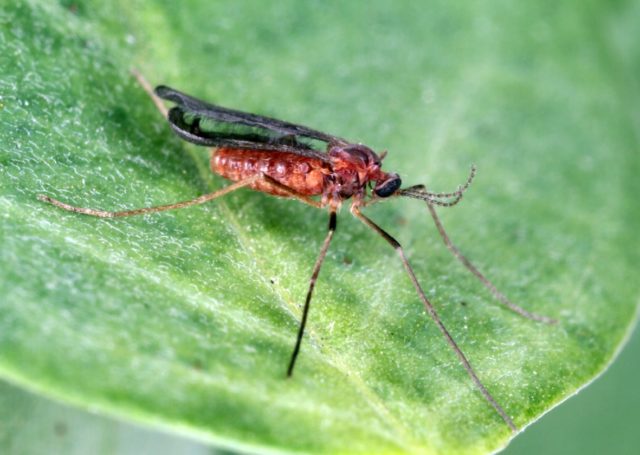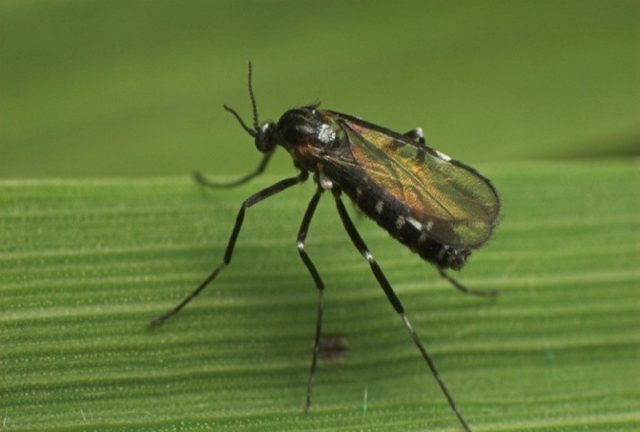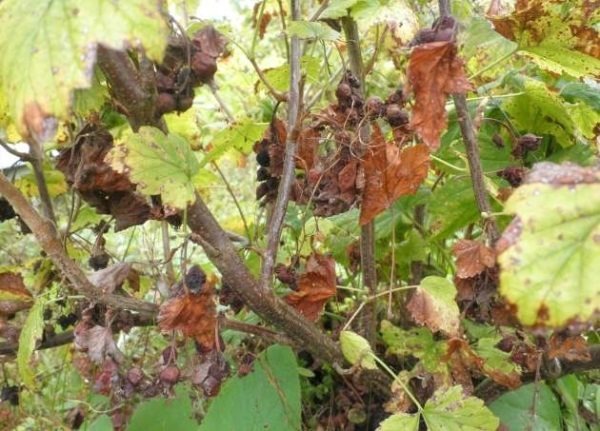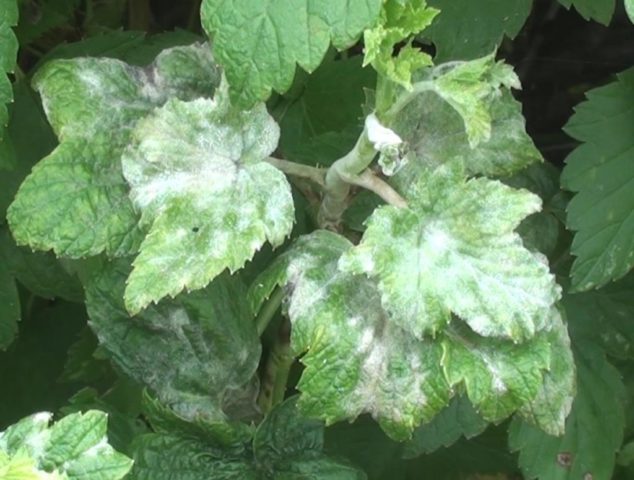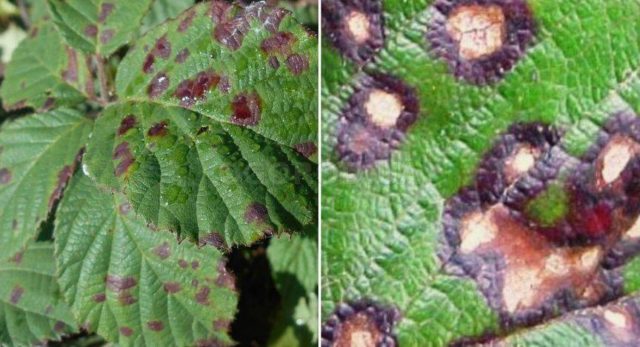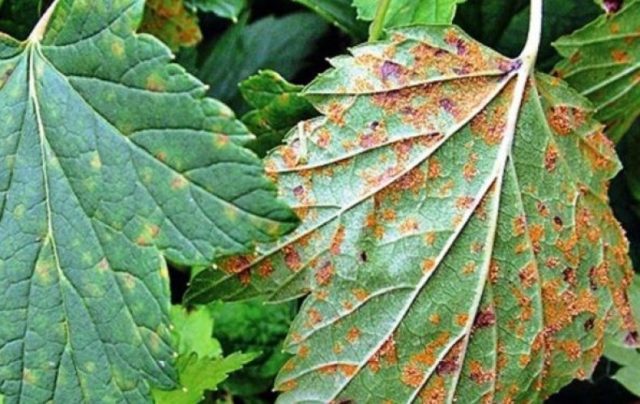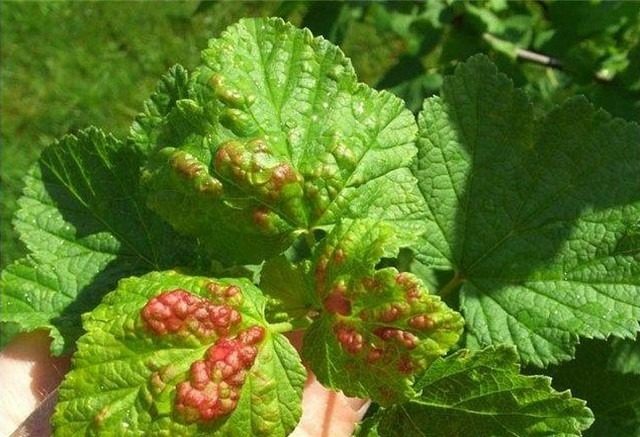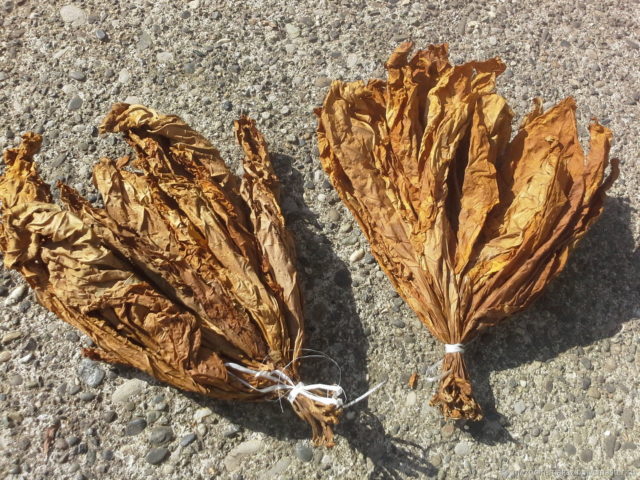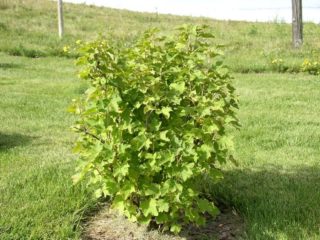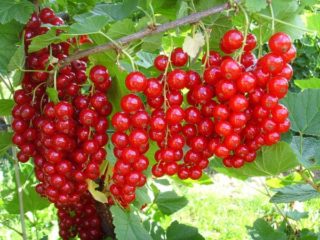Content
Gardeners are often faced with the fact that in the spring or at the height of summer, when the berries are still ripening, currant leaves suddenly curl. The bush, which until recently looked completely healthy, can rapidly lose up to half of its green mass: the affected leaf blades quickly lose color, dry out and fall off. To effectively combat this ailment, it is necessary to correctly establish why the leaves are twisting: due to spores of a fungus or the activity of insect pests. Timely treatment will help save the shrub, and timely preventive measures taken will prevent the situation from recurring in the next season.
Why currant leaves curl
To understand why twisted leaves appeared on currants, a careful examination of a sick plant will help. Every detail matters:
- young or old leaves curl;
- are there spots, what color they are;
- whether plaque, cobweb is noticeable;
- leaves curl inward or outward;
- what does the reverse side of the affected plate look like;
- Are there growths, swellings, bumps.
The time of the appearance of these signs on the leaves and shoots of currants also plays a role.
Often, it is enough to carefully unfold the deformed organs of the plant to see the insect larvae inside.
Pests
If the leaves of currants curl into a tube or a lump, this may well be the result of the activity of a number of parasitic insects.
Leaf roll
A small (about 2 cm) brown moth, often with a dark pattern on the wings, which fold flat on the back. One butterfly is capable of laying up to hundreds of eggs on the inner surface of currant leaves within a month, from which yellow or bright green caterpillars will subsequently hatch. They eat up the leaf blades, and after a while they twist into them into cocoons, tightened from the inside with a cobweb. In autumn, after the damaged leaves fall off, the caterpillars pupate in them and overwinter. In the spring, butterflies will again appear from the pupae, which will begin to lay eggs on the currants.
Aphid
Another very common enemy of currants is aphids. These are colonies of small, inactive insects that feed on leaf juices, which is why the latter turn yellow, dry out and curl.
Currants are usually harmed by two types of this parasite:
- Shoot (gooseberry) aphid - greenish color. Most often, it is she who is the reason that the upper leaves of the black currant curl. First, the insect sucks the juice from the buds, then moves to the tops of the shoots. As a result, young leaves curl outward in shapeless lumps. Ants that feed on honeydew, the sweet viscous liquid that it secretes, help spread aphids on currant bushes. They also take the pest to the anthill for the winter, and in the spring they return it to the plant again.
- Sheet (gallic) aphids live on their own, preferring red or white currants. In the middle of summer, females develop wings, due to which the parasite is able to travel considerable distances, laying eggs in the fall near the buds of the plant. Insects, hatched from eggs in spring, populate the underside of currant leaves, feeding on their juice. As a result, characteristic bulges appear on the outer side of the plates, resembling "blisters" of brownish-red or yellow colors. Leaves (both young and mature) quickly lose their shape, curl and die.
Spider mite
A tiny pest of yellowish-orange color, visible only through a magnifying glass: the size of the female reaches 1 mm, the male is half the size. The wind helps the spider mite move. Colonies of this parasite live on the seamy side of plant leaves. Initially, small light dots appear there. Over time, they form whole pockets that fade, then turn brown. Leaves dry up, curl and fall off.
Glass-maker
A small butterfly with almost transparent wings and a black body, marked by three clearly visible transverse yellow stripes. Lays eggs on currant bushes in damaged areas of the bark. Caterpillars, which appeared after 10-15 days, eat up the passages inside the shoots, feeding on their core. At first, the damage to the currant bush is almost imperceptible, but the next year, by the time the larvae have time to mature, the damaged branches begin to die, and the leaves on them quickly dry and curl.
To date, no varieties of currants and gooseberries have been developed that are resistant to the activity of glass.
Currant gall midge (leaf and shoot)
Gall midge is a small (up to 1.5 mm) winged front sight. The following types are dangerous for currants:
- Currant leaf gall midge of yellow-brown color. Lays eggs at the top of young shoots. The larvae emerging from them eat the leaves, which is why the tops of the shoots twist, become "torn", gradually turn black and dry out. Mostly young bushes are affected.
- Currant shoot gall midge, it has a yellow-orange color and has brown stripes on the back. She lays eggs in cracks in the bark. In places of accumulation of colonies of larvae, the bark of the currant acquires a brown tint, spots and "depressed" places appear on it. Since the larvae drink the juices of the plant, the branches become brittle and dry out rapidly, while the leaves on them twist and die.
Diseases
The reason that currant leaves curl may be a disease. Mostly this shrub suffers from fungal diseases. Knowing the symptoms of the most common of them will help determine how to treat the plant.
Anthracnose
This disease usually manifests itself in the middle of summer. On the leaves, at first, islets of brown-red spots appear, the area of which gradually increases. Dark marks can also be seen on petioles and young branches, in rare cases even on berries. Gradually, the currant leaves turn red and curl, then fall off. If anthracnose is detected, it is necessary to treat with chemicals not only currants, but also shrubs and trees growing nearby. The disease negatively affects winter hardiness, development and productivity of a number of garden plants.
Spheroteka
In another way, this disease is called American powdery mildew. Its first manifestations can be seen in May. The main symptom is a white bloom, reminiscent of flour or pollen, clearly visible on young shoots, leaves, ovaries and berries. Gradually, the plaque thickens and takes on a brown color, becoming like a mold. The leaves darken and curl, the shoots are deformed and stop growing, and the berries lose their taste and presentation.If treatment is not started on time, the currant bush will quickly die.
Septoria
You can also notice that currant leaves curl up when the plant is affected by septoria disease (otherwise, white spot). The cause of this ailment may be poor ventilation of the bush due to the fact that excess branches not removed in time have grown.
The risk of septoria infection increases if:
- air humidity is increased;
- the bush grows in the shade.
A sign of the disease is numerous small specks of grayish color with brown outlines that appear on the leaves. Further, dark blotches appear on them (fungus and its spores). The leaves quickly curl, lose color and fall off, the trunk becomes brown. This disease is dangerous not only for currants, but also for other horticultural crops, since it can quickly spread over a large area.
Columnar rust
The main symptom of columnar rust on currants is yellowish-orange spots that appear on the leaves. The disease manifests itself in the middle of the growing season. The reverse side of the leaf blades is covered with dense growths with rusty spores, which gradually darken and grow over the entire accessible surface. Infected leaves turn yellow, curl and fall off prematurely.
Goblet rust
Another common type of rust dangerous for currants is goblet. Infection with this disease occurs in early spring, but you can notice its first signs on shoots, leaves, flowers in early summer. Orange spots with small dark dots appear on the underside of the leaf blades. In their place, pustules and tubercles are gradually formed, shaped like goblets. Inside there is a brownish powder - fungal spores. Leaves suffering from rust curl and quickly crumble. The currant bush, weakened by the disease, produces fewer shoots, bears less fruit and does not tolerate winter well.
How to process currant leaves if they curl
Having determined what caused currant leaf curling, you need to start treatment as soon as possible. It should be remembered that the processing of currants with chemicals, as a rule, is carried out before flowering and after harvesting. Between these stages, it is preferable to spray the shrub with biological products or apply folk recipes.
Chemicals
The strengths of the fight against pests and diseases, due to which currant leaves curl, with the help of chemicals - high efficiency and quick results. However, it is important to carefully follow the instructions: do not exceed the recommended doses and adhere to the specified processing times for plants. It is advisable to use chemicals if the currant leaves are severely affected and it makes no sense to use safer means (folk, biological products).
If the leaves of the currant curl as a result of the activity of parasitic insects, chemical insecticides will be effective against them:
Active substance | A drug | What pests (from which leaves curl) | When to spray |
Imidacloprid | Tanrek, Confidor-Extra, Biotlin | Aphid | Before flowering |
Thiamethoxam | Aktara | ||
Lambda Cyhalothrin | Karate Zeon | Mite, leaf roll, aphid, glass | |
Cypermethrin | Inta-vir | Glass, aphid | Before flowering and after harvest |
Permethrin, cypermethrin | Spark "Double Effect" | Aphid, leafworm | During the growing season |
Beta-cypermethrin | Kinmix | Leaf rollers, aphids, gall midges | |
Cypermethrin, malathion (karbofos) | Inta-Ts-M | Leaf rollers, glass dishes, aphids | |
Diflubenzuron | Herald | Aphid, leafworm | |
Karbofos | Fufanon, Aliot | Mite, leaf roll | During budding |
Aphid | During the growing season | ||
Pyrimiphos-methyl | Actellic | Tick, aphid, gall midges | Strictly according to the instructions |
To cope with fungal diseases, manifested in the fact that currant leaves curl, chemical fungicides will help:
Active substance | A drug | What diseases (from which leaves curl) | When to spray |
Copper sulfate |
| Anthracnose, septoria, powdery mildew | According to the instructions, no later than 15-20 days before harvest |
Copper sulfate and quicklime | Bordeaux mix | Rust, septoria, anthracnose, powdery mildew | 3% solution - until the kidneys open; 1% solution - at the stage of "rosebud" |
Copper oxychloride | Abiga Peak, Hom | Powdery mildew | According to the instructions, no later than 3 weeks before harvest |
inkstone |
| Anthracnose, septoria, powdery mildew | 1-3% solution in the spring before the buds open and in the fall (when the leaves begin to fall off) |
Colloidal sulfur | Tiovit Jet | Mite, powdery mildew | During the growing season |
Difenoconazole | Raek, Speed | Powdery mildew, septoria | |
Propiconazole | Tilt, Forecast | Powdery mildew, rust, anthracnose, septoria | Before flowering and after harvest |
Penconazole | Topaz | Powdery mildew | During the growing season |
Benomil | Fundazol | ||
Triadimephone | Bayleton |
Biological agents
Unlike chemicals, the action of biological products is more gentle. As part of these funds - live microorganisms (viruses, bacteria, fungi).
Biological products are suitable for processing currants when the leaves are curling, if:
- the disease was detected at the initial stage;
- the number of insect pests is small.
The overwhelming majority of biological products act only at an appropriate air temperature (+ 10-15 ° C). Accordingly, it is possible to use them in the treatment of currants, in which the leaves are curling, is possible only at the stage of the "pink bud" and immediately after flowering.
A type | A drug | What pests / diseases (from which leaves curl) |
Insecticides | Aktofit | Mite, aphid |
Bitoxibacillin | Tick, aphid, leafworm, gall midge | |
Lepidocide | Leaf roll | |
Fitoverm | Aphids, mites, leaf rollers | |
Fungicides | Fitosporin | Rust, powdery mildew |
Pentaphage | Powdery mildew | |
Ampelomycin | ||
Mikosan | ||
Alirib B | Powdery mildew, anthracnose, rust, septoria | |
Insectofungicide | Gaupsin | Powdery mildew, rust, septoria, aphid, leafworm |
Folk remedies
For the treatment of damages and diseases of currants (including those as a result of which its leaves curl), folk recipes for infusions and decoctions, mainly on a plant basis, are also used. Their effectiveness is not as high as that of biological and, moreover, of chemical drugs, and the effect will have to wait, but they will not cause any harm to plants, animals and humans.
Among the most effective folk remedies for processing currants, in which the leaves curl, are the following (the proportions are indicated per 10 liters of water):
- Onion and garlic. 100 g of peeled ingredients must be cut as small as possible and covered with hot water. Insist for a day, then strain and spray the currant leaves (this amount is enough for 2-3 bushes). Use to control aphids, leafworms, caterpillars and insect larvae.
- Tobacco leaves. You will need 400 g of their dry powder, which must be filled with water and left for 2 days. Then pour another 10 liters of water into the composition and add about 80 g of shavings of laundry soap.Strain and use if currant leaves curl and turn black as a result of aphids or spider mites.
- Celandine. You should take 3-4 kg of fresh or 1 kg of dry grass. Cover with hot water and leave for 1.5 days. It will help with the defeat of currant leaves by aphids or glass.
- Tomato tops. Pour 3 kg of fresh crushed leaves, stems and stepchildren (or 1 kg of dry raw materials) with water and leave for 3-4 hours. Then boil the composition for half an hour, cool and dilute with water in a ratio of 1 to 4. It is effective if the leaves of the bush curl due to the activity of currant gall midge.
- Dandelion. 400 g of leaves and roots of the plant should be poured with hot water and kept for a couple of hours. Strain the tincture. Process currants, the leaves of which are curled by aphids.
- Iodine solution (10 ml per 10 l of water). Effective against powdery mildew (spheroteka).
- Wood ash. Stir 1 kg of powder in a bucket of water, leave for 5 days. Add liquid laundry soap. Spray currant leaves, which are curled as a result of damage by spheroteka. Also used in the fight against aphids.
You can also learn about the various ways of processing currants from pests and fungal diseases (including those from which leaves curl on the bushes) at different stages of plant development, you can also learn from the video:
Agrotechnical measures
If the leaves of the currant curl, then the fight against disease or insect pests is not limited only to spraying the plant with various compositions. The gardener needs to take other actions:
- regularly remove and burn shoots and leaves affected by disease or larvae;
- under currant bushes it is worth planting some medicinal plants (yarrow, marigold, tansy), as well as dill: they attract ladybirds, lacewings, hoverflies, which will help to cope with aphids, spider mites and other pests;
- to attract birds (tits, sparrows) to the berry garden with the help of feeders and drinkers;
- it is necessary to destroy anthills at the roots of the plant, and it is recommended to treat the lower parts of the branches on the bushes with special garden glue;
- if butterflies appear over the bushes, you need to process the currants with folk remedies with a strong pungent odor (garlic or tobacco infusion);
- be sure to pay attention to preventive measures - this will help to avoid diseases and damage by parasites, from which currant leaves curl.
Preventive actions
Prevention of diseases and pests is the key to a healthy and fruitful berry garden. It is easier to prevent a situation in which young and mature leaves are curled in currants, than to later eliminate the consequences of an illness or the destructive activity of insects.
The main preventive measures:
- When planting currants on the site, you need to ensure that the distance between the bushes is at least 70-80 cm. This contributes to good ventilation of the plants, allows the leaves to receive enough sunlight and heat, and also dry quickly after rain.
- All planting material must be healthy, with no visible sites of infection and damage.
- Before planting in the ground, currant seedlings should be held for 15 minutes in warm (about 45 ° C) water to disinfect them from parasitic insects.
- You can not plant coniferous plants next to currant plantings (they contribute to the infection with goblet rust), as well as gooseberries (they suffer from the same diseases and pests as currants).
- It is necessary to get rid of weeds under the bushes, mow overgrown grass.
- Once every 2-3 years (more often if necessary) currant bushes should be thinned and rejuvenated by removing overgrown shoots.
- Twice a year (in spring and autumn), you need to dig up the soil in the near-trunk circles, mulch it with the addition of wood ash, and apply top dressing in a timely manner.
- In early spring (before the buds appear), it is recommended to spray the currants with Bordeaux liquid or copper sulfate solution. This will help prevent fungal infections.
Conclusion
Noticing that currant leaves are curling, you need to try to understand as soon as possible what caused this symptom. Having identified a fungal disease or identifying an insect parasite, you should choose the right drugs and immediately treat the shrub. When choosing means (chemical, biological, folk), it is necessary to take into account how badly the plant is affected, as well as in what phase of its development the treatment is to be carried out. In order to prevent this from happening in the future, special attention must be paid to preventive measures.
